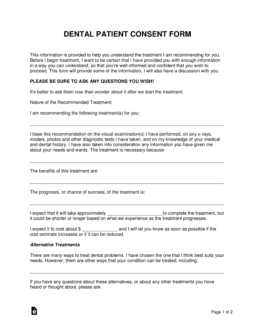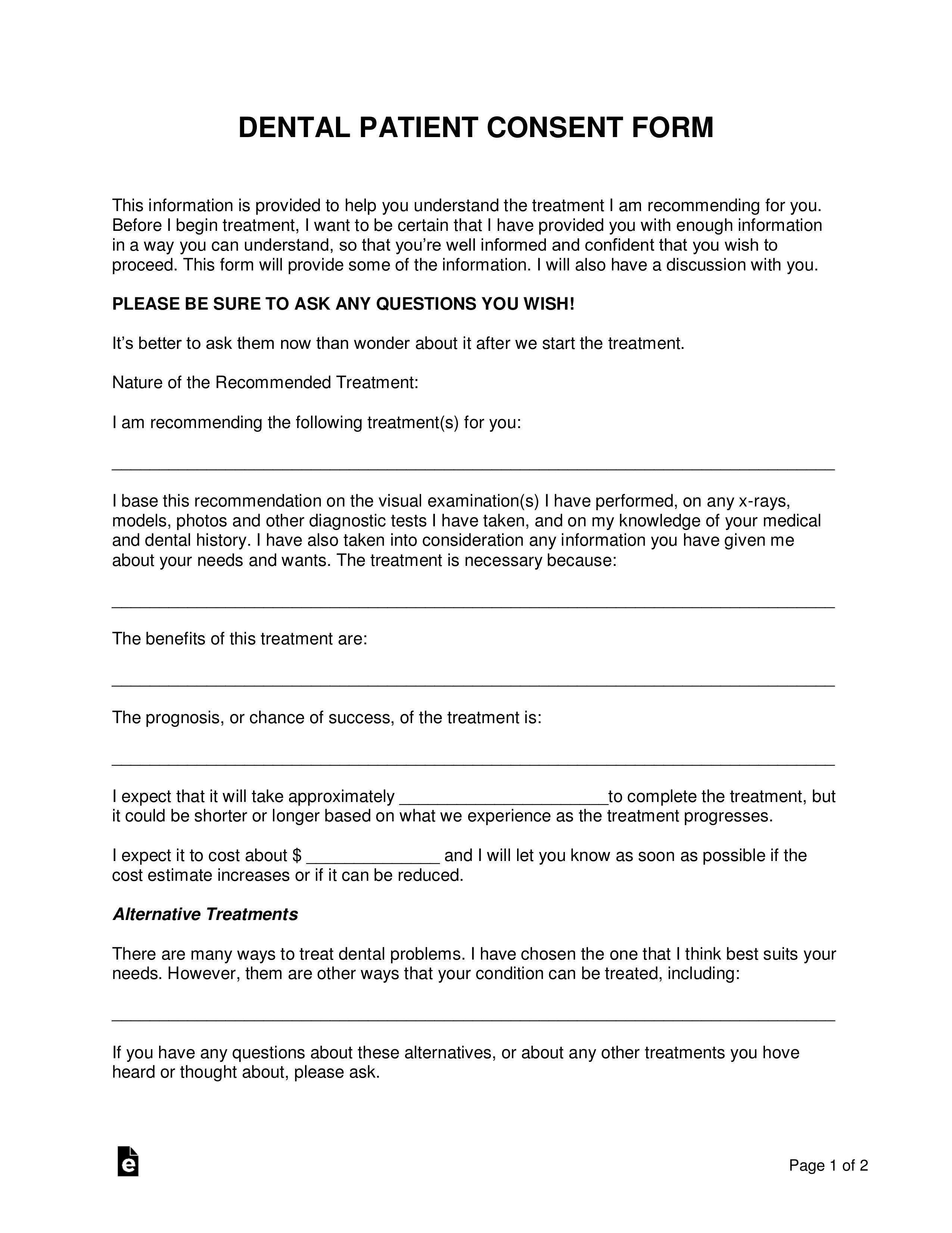Updated January 03, 2023
A dental consent form is a written authorization signed by a patient that gives a dentist the go-ahead to perform specific procedures. To ensure that the patient gives informed consent, this form should be comprehensive – summarizing medical issues, proposed interventions, and risks.
The consent form is an essential document for any dental practitioner: it ensures that the patient (or parent/guardian in the case of a minor) is educated about important medical decisions, and it provides the dentist with reasonable protection from liability should something go wrong during treatment.
What to Include
This form should provide the patient with a complete picture of the current situation and proposed interventions. It should include:
- An explanation of any current dental issues
- A specific list of proposed dental procedures
- The rationale for these procedures and their expected outcomes
- Any risks associated with the proposed procedures
There may be several different ways to treat a problem. These should be specifically mentioned in the consent form.
How to Use a Dental Consent Form
1. List Details of Dental Related Risks
The patient should understand risks before consenting to treatment. Make sure to clearly list any risks or other downsides on the form before giving it to the patient for signature.
Communicating risks is an ethical imperative for the dentist. It’s also legally and practically important, since the dentist may face liability if the patient was not properly educated about risks.
2. Make Certain Patient Understands
People tend to go on autopilot when faced with paperwork. Make sure to discuss this form and its contents with the patient, and ensure that the patient truly understands it before asking for their signature. Remember, your role is not to sell a patient on a particular course of treatment, but rather to provide expert dental counsel, a complete picture of benefits and risks for any treatment, and the opportunity for the patient to make a clearheaded decision.
3. Under 18 Patient Needs Parent to Sign
Minor patients cannot give legal consent. If treating someone who is under 18 years-of-age, be sure to secure a signature from a parent or other legal guardian.
4. Obtain Signatures
Once the document has been signed, file it away with the patient’s other records.


